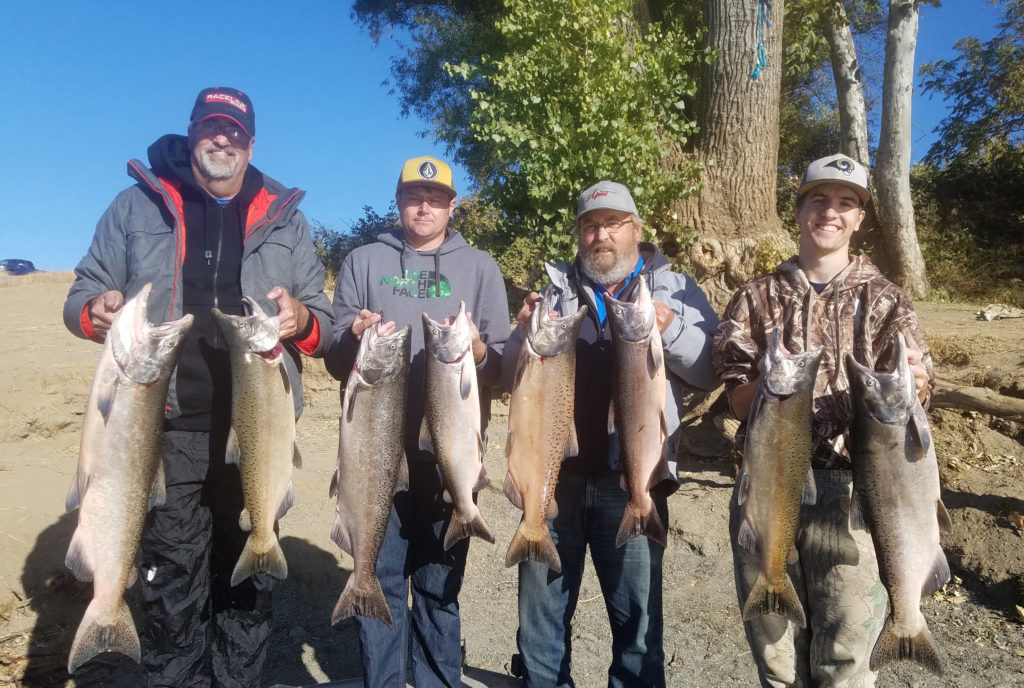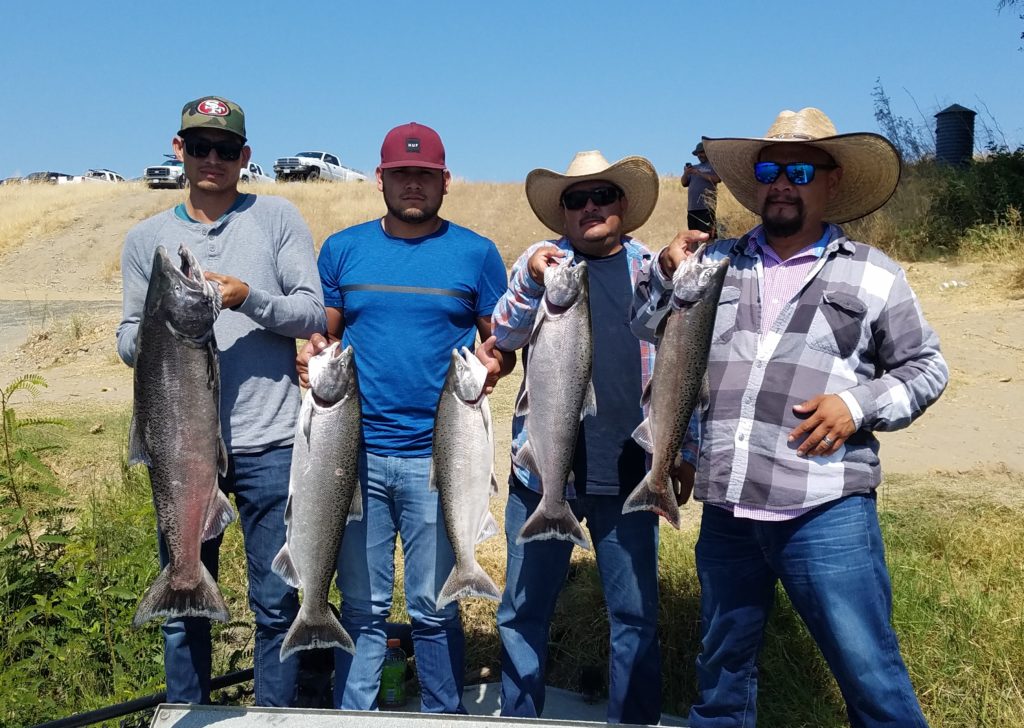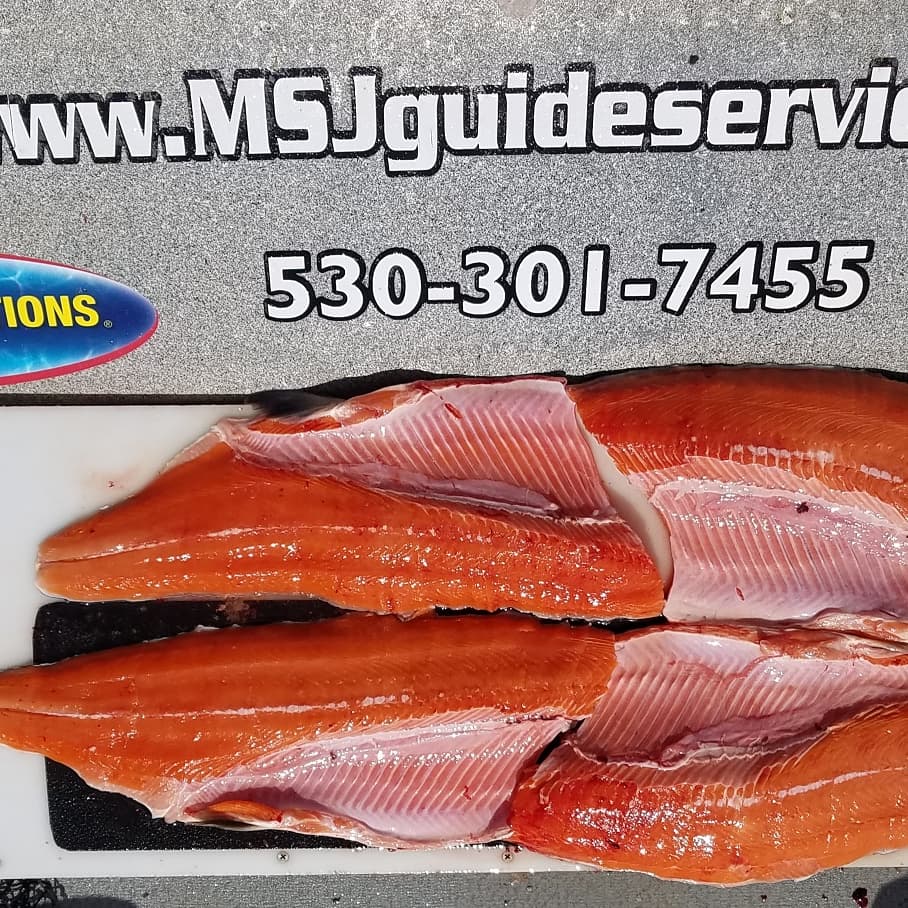Strong Salmon Run Expected On Feather, Sac Rivers

The following appears in the July issue of California Sportsman:
By Chris Cocoles
Massive Lake Oroville and the dam that feeds the Feather River below can be a make-or-break variable in how much cold, deep water greets returning king salmon.
“The lake is plum full. So they’re going to have to start releasing (water). And with that snow runoff they’ll have to continue releasing,” guide Manuel Saldana Jr. says. “So we’re all pretty excited about the run coming up on the Sacramento and Feather Rivers.”
Saldana, based in Yuba City, owns MSJ Guide Service (530-301-7455; msjguideservice.com) and is a veteran at reading and fishing these waters. But while projections for 2019 dictate a pretty solid number of fish returning, Saldana and colleagues know that the water has to cooperate to keep the fish happy and eager to head upstream and bite.
“These fish come in when that water cools off,” Saldana says. “Hopefully this year we’ll have all that snow runoff and a little bit of cooler water, so we’ll get them in a little sooner than later.”
By mid-August, when the fish are in theory really entering the main rivers from the Delta, an ideal water temperature is about the mid-50s, or at worst around 57 or 58 degrees. That’s a far cry from what anglers have encountered in years with less water flowing down the Feather.
At times, late summer has still meant the salmon in uncomfortable if not dangerous water (65 or so degrees). But with a heavy snow year expected to raise the water level at Oroville even more, the state will have even more need to release some of that cooler water.
FISHING THE FEATHER
The much larger Sacramento River features long straightaways with consistent depths of around 20 feet with sandy or clay bottoms.
“The Feather River is a lot flatter and not nearly as wide or long. But it’s also more shallow and these fish are going to hang in these holes,” Saldana says. “You can’t treat the Feather River like the Sacramento River.”
So Saldana, who hits the Feather regularly when it’s productive, “pocket” fishes his preferred river. Back-trolling sardine-wrapped plugs – Saldana likes size KF16 Brad’s KillerFish – is one of his favorite tactics.
“We’ll put those right in front of their faces, and when they start tugging we’ll set the hook,” Saldana says. “You can also drop down some eggs or boondoggling – keeping the boat sideways and just kind of dragging the eggs and using the current.”

TAKE IT TO THE LIMIT
One promising change to 2019 is that the two-fish limit (four in possession) was reinstated. Last year’s outlook was bleak enough for the California Department of Fish and Wildlife to institute a daily limit of just one king per angler.
“I probably lost a good 40 to 45 percent of my business,” says Saldana, citing potential customers’ hesitancy to book trips with the usual two-fish bag limit cut in half.
“Last year was a decent year. We had our fish come in but in smaller pods. They didn’t come in as a big wave or anything. A little pod here and a little pod there. This year we were happy that they gave us back the two-fish limit like the old days. So we’re looking for a good, good run.” CS
Sidebar
NORCAL LAKES GET STOCKINGS OF FINGERLING KOKANEE, LANDLOCKED KINGS
One of guide Manuel Saldana Jr.’s more recent ventures has been taking clients out on Lake Oroville, which has a sizeable population of landlocked king salmon (California Sportsman, June 2018).
The fishery’s success has been boosted by the California Department of Fish and Wildlife’s aggressive planting of fingerling salmon in Northern California lakes such as Oroville.
“They were going to dump them in Oroville for about the fourth year in a row,” Saldana says. “I’m super excited about that.”
In late June, CDFW announced it was stocking a combined 1.45 million landlocked Chinook and kokanee to various waters.
“This year’s stocking consisted of releasing 792,942 fingerling kokanee salmon into 16 waters and 672,734 sterile, fingerling Chinook salmon into eight waters,” the press release said. “Additional allotments of the sterile – or ‘triploid’ – Chinook salmon are scheduled to be released later this fall into Northern California’s Lake Oroville, Lake Shasta and Trinity Lake.”
CDFW says within two or three years these fish will grow into catchable size. Oroville has been producing good-sized kings for years now. And for Saldana, who in the past has mostly focused his MSJ Guide Service business on spring stripers and fall-run Feather and Sacramento River salmon, Oroville and adjacent lakes have allowed him to branch out for trips.
“I’ve been watching the (fishing reports) and (anglers) have been catching some nice holdovers now. Last year the biggest one I caught was 22 inches and (recently) they’ve been catching some of those at like 26 or 28 inches. Oroville is doing really well with lots of water and they’re putting in more and more fingerlings in there. That ensures that 2020 is going to be good as well.” CC





